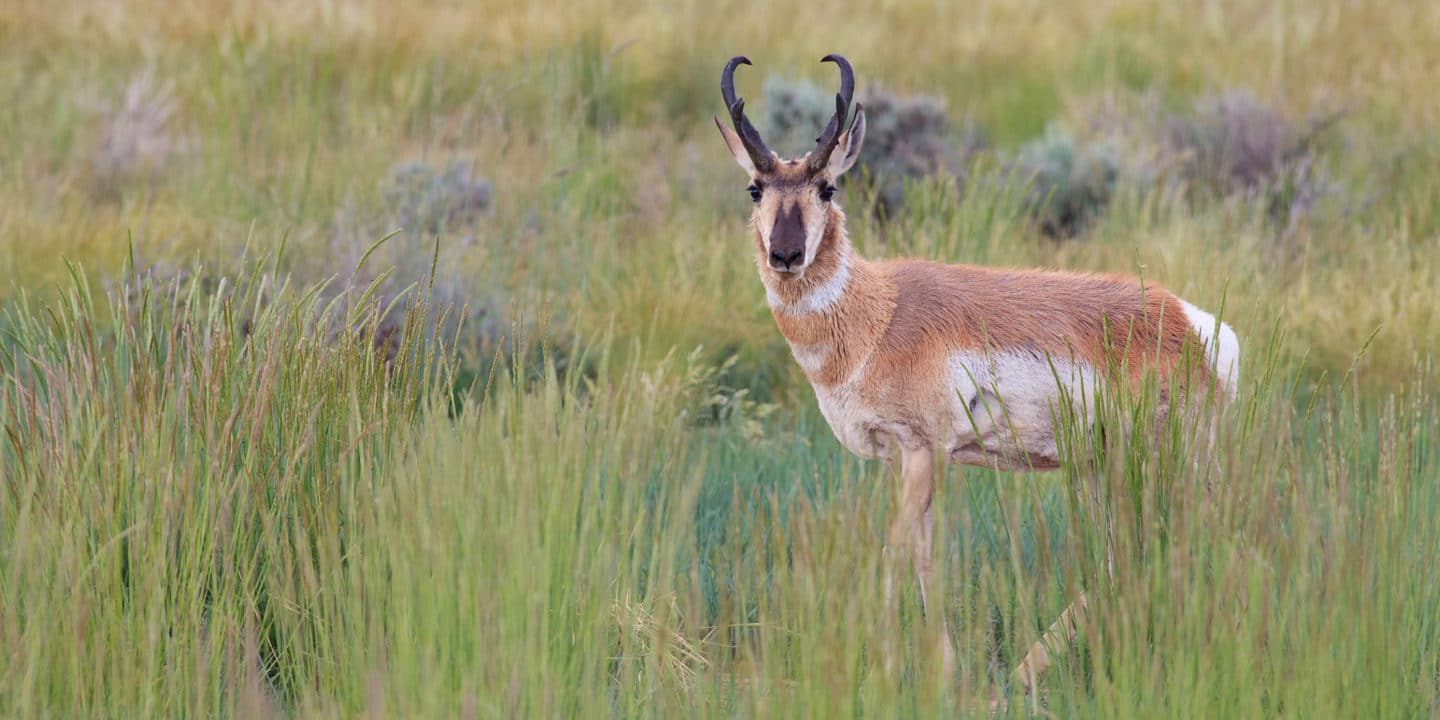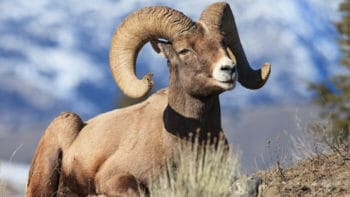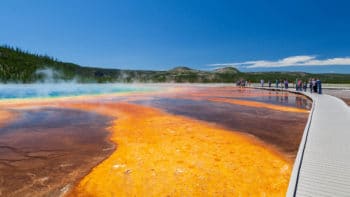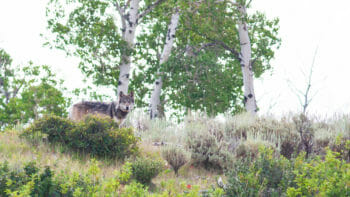Which Animals Call Yellowstone Home?
Wildlife is abundant in Yellowstone National Park, with hundreds of species calling this area home. Some are easy to spot and others are more elusive, but with a little luck, and a little knowledge, you’ll be able to find creatures both big… and small.
Oh, give me a home where the buffalo roam, where the deer and antelope play…
Herd Animals
Those words are familiar to many, and may even tempt some folks to break out into song! Considered to be the unofficial anthem of the west, A Home on the Range sings praise to the peace and beauty that can be found in the western part of the country. That’s why people travel to places like Yellowstone National Park, where the wilderness has been preserved since 1872 for the benefit and enjoyment of future generations. The opening lines to this song also do a great job of listing a few of the herd animals that call Yellowstone National Park home!
Buffalo, also known as bison, are the largest animals in the park and used to be one of the most numerous large mammals in North America. There was an estimated 50 million bison once roaming the continent; that number has unfortunately been decreased to only about 15,000 in the world. Nearly 5,000 of those bison are in Yellowstone National Park. This massive animal, which can potentially weigh up to one ton, thrives in the open grasslands of the park. Typically you can find bison grazing all day in areas like the Lamar Valley or Hayden Valley, where the females will be in large herds together in order to protect each other and their calves. The bulls will usually be more solitary until August comes around, which is the breeding season, and therefore when those males want to be intermingling with the females (whether the ladies appreciate it or not). When driving through Yellowstone and looking for bison, pay attention to the roads as much as the open fields! It is not uncommon that these animals use the same routes we drive to migrate through the park, creating a traffic obstruction rather unique to Yellowstone dubbed, a “Bison Jam”.
The male and female bison both have horns, which can make telling them apart a little challenging. Overall, the male, or bull, bison has a larger body and broader head size. The bull can potentially weigh as much a 1 US ton (900 kg) while the female may not exceed 1,000 – 1,200 lbs (450 – 500 kg).
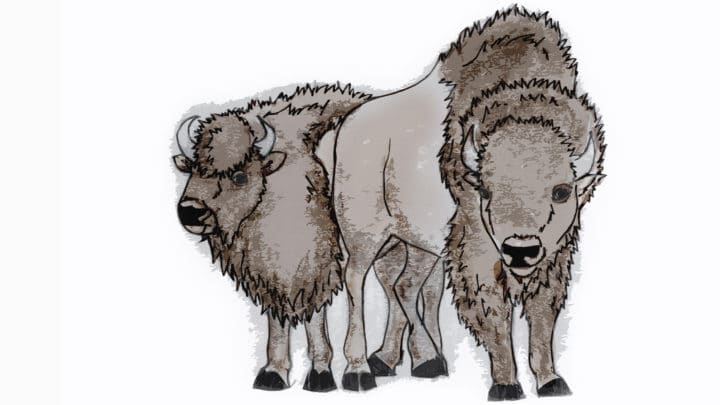
Deer and antelope both do a lot of playing in Yellowstone National Park! There are actually two types of deer in the park, the white-tailed deer and mule deer. If you’re traveling from the eastern part of the United States, you would be most familiar with the white-tailed deer, and you’ve probably seen plenty of them! Fortunately here in Yellowstone there are enough natural predators that the white-tailed and mule deer populations are kept at healthier numbers. Both of these species will move between forested and grassland habitat throughout the day.
Now, the antelope in Yellowstone National Park are not actual antelope, they are a separate species known as pronghorn. This animal evolved specifically in open grassland and sagebrush steppe habitat. It has the incredible ability to sprint at speeds of 60mph, but unlike deer it lacks the ability to jump very high! This is one reason pronghorn avoid forested areas where there could be obstacles, like fallen trees. The pronghorn is also not adapted to survive very snowy winters, so herds of them will migrate out of Yellowstone National Park in the late fall as winter sets in.
A herd animal not mentioned in A Home on the Range is the elk. This animal is essentially a super-sized deer that could weigh anywhere between 500 – 700lbs (226 – 317 kg). Roughly 10,000-20,000 elk call Yellowstone home in the summer months. Similar to deer, elk will typically move between forested habitat and open valleys while foraging throughout the day. Rut, the breeding season, is the best time to see large groups of this animal out in the open, which occurs in September and October. Bull elk will court as many as 20-30 cows at once, and keep that harem nearby in order to prevent other males from sneaking in and trying to breed with those females.
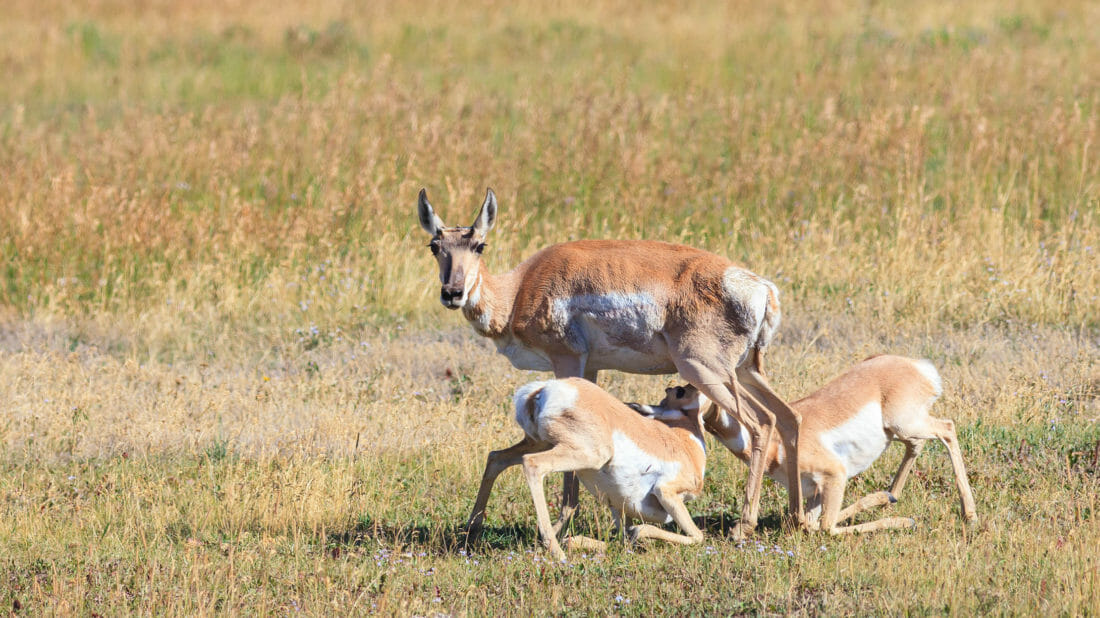
Meat Lovers
Wolves, bears, weasels, badgers, mountain lions… There are a multitude of carnivores found in Yellowstone’s ecosystem! Wolves might be one of the most sought after animals in the park. They are the largest canine species in Yellowstone National Park, outweighing the smaller coyote and fox easily by a hundred pounds or more (45 kg). The wolf is one of the only predators found in the park that will hunt as a pack, which they typically will do in the open valley areas where elk congregate in the morning and evening to graze. It’s incredible that these wolves have only called Yellowstone home since 1995. This species has roamed North America for millions of years, and unfortunately by 1926 the last wolf was hunted by humans in Yellowstone. Biologists saw how the ecosystem was imbalanced by the absence of this apex predator, and initially brought 14 wolves from Canada and released them in Yellowstone in 1995. The reintroduction was successful, and a survey conducted in January of 2020 reported at least 94 wolves thriving in the park!
Of all the park’s iconic animals, from bison to bears to birds and so much more, there is perhaps no species more emblematic of Yellowstone’s wilderness and wildness than the grey wolf (Canis lupus). It is also here where wolves have played a starring role in one of the greatest conservation success stories in our history.
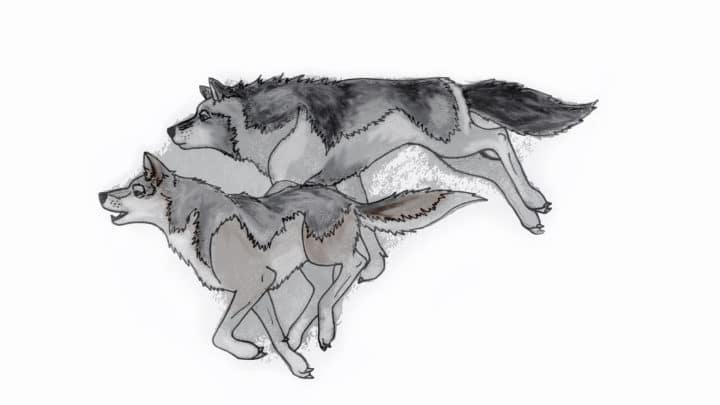
Two varieties of bears consider Yellowstone to be home, the Grizzly Bear and Black Bear. Grizzlies are the largest carnivorans in the park, potentially weighing as much as 700lbs (317 kg)! Surprisingly though about 80-90% of their diet is vegetation, which means they spend a lot of time roaming around grasslands, foraging for plants with nutritious roots and seeds. The black bear survives on a lot of vegetation too, though spends more time in forest habitat where they can find food like pine nut middens, that squirrels have stashed away, and native berries. When bears are seen eating meat, it is usually the carcass of an animal that died of natural causes or was hunted by another predator. This is known as being an “opportunistic carnivore” which is a very fancy way of saying LAZY.
Many of the other meat eaters of Yellowstone are not easy to find. Unless you are seeking coyotes or foxes, which will hunt along roadways and are therefore easier to spot, the other carnivores prefer more remote wilderness or live in areas that are more challenging to search. Mountain lions, with their evolved night vision, are nocturnal hunters and hide in the cover of darkness. Badgers are a burrowing animal, so spotting them means getting lucky enough to catch one above ground! Then there are the short-tailed and long-tailed weasels, along with the American marten. These varieties of weasel prefer to hunt in the forest or tall grassy meadows, which are not habitats that make for easy Yellowstone wildlife watching, especially when the wildlife is anywhere between the size of a hamster to a small cat.
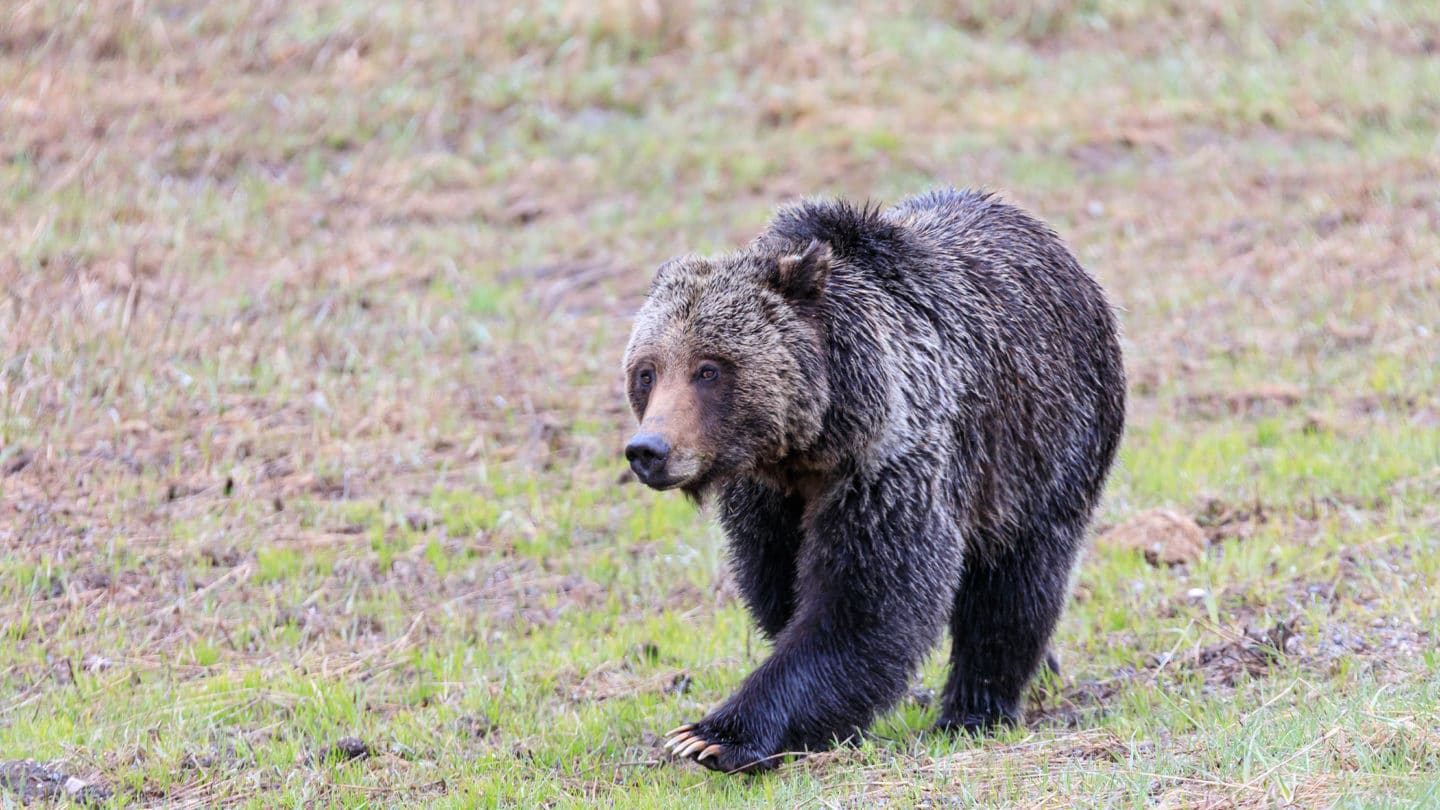
Aquatic Animals
About 1,000 rivers and streams flow through Yellowstone National Park, which means there is plenty of aquatic habitat for water loving wildlife! This park actually houses the largest inland population of cutthroat trout, a fish that requires cold, clean waterways to survive. This trout attracts anglers from all around the world to wade into the chilly rivers of Yellowstone and try to catch one by fly fishing. Another animal that these fish attract are river otters. They can be found along rivers and lakes, slipping and sliding their way through the water, either in play or while hunting for food. This can be a tricky animal to spot, as they can hold their breath for 2-3 minutes at a time, and reach speeds of 6 mph when swimming underwater.
Believe it or not, Yellowstone is home to the largest rodent in North America- the American beaver. This mammal can weigh up to 90lbs (40 kg)! Beavers spend most of their life in, or near water, which is why they are constantly damming up rivers and streams and flooding areas. This increases the area water covers and therefore decreases the amount of dry land the beaver has to travel over. You will often see evidence of beavers before spotting the animal itself, such as the gnawed down trees and delicately woven dams across waterways. Another aquatic rodent found in Yellowstone is the muskrat, which lives in habitat similar to the beaver. The two are often mixed up, especially when seen swimming. Keep in mind that the muskrat is much smaller, and will have a thin rat-like tail instead of a broad, flat one.
All this talk about larger mammal species, it is easy to forget the little guys- frogs, toads and salamanders! Five varieties of amphibian have evolved to call Yellowstone National Park their home: the western tiger salamander, boreal chorus frog, western toad, Columbia spotted frog and the plains spadefoot toad. Most visitors to this park are not even looking for these little animals, though quite often they might be hearing them without even knowing it. Starting by mid May, near any marshy habitat or along creeks and rivers, the boreal chorus frog can be heard at near deafening levels around dawn and dusk.
Yellowstone Lake and the Yellowstone River Watershed is home to the largest inland populations of cutthroat trout who prefer clear, cold, freshwater streams and are easily identified by two prominent red slashes on the lower jaw, giving them their name.
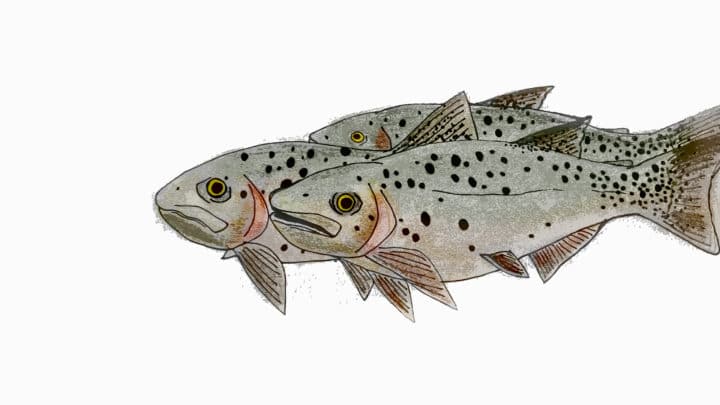
Feathered Friends
The skies are not a quiet place in Yellowstone National Park, because 300 different bird species live in the park throughout the year! There are the larger predatory varieties, such as the bald eagle, which is typically hunting and nesting near rivers and lakes, as well as golden eagles who prefer drier, rocky habitat and will nest on cliff sides. The common red-tailed hawk will often be seen flying over open fields, hunting for small mammals, along with the less common ferruginous hawk. Peregrine falcons are active and nesting in Yellowstone throughout the summer, using their incredible ability to dive through the air at 200mph to hunt other birds. Two of the largest varieties of owl also call Yellowstone home – the great horned owl and great gray owl. Both of these owls hunt primarily in coniferous forests, searching for small mammals from a high perch and silently swooping down to snatch up the unsuspecting prey.
Along waterways a huge variety of ducks, geese and wading birds thrive. Species as common as the Canada goose, to as rare as the harlequin duck can be seen making their homes along the Yellowstone, Lewis, Lamar and Madison Rivers… to name a few! In shallower waters, blue herons, killdeer, ibises, wilson snipes and soras will wade along searching for fish and small invertebrates to eat. The largest waterfowl in North America also resides in Yellowstone, the trumpeter swan, which can weigh up to 30lbs! They typically are seen in slower moving rivers, dipping their long necks under water and sticking their feathered booties up in the air to nibble at aquatic vegetation below. In open fields near water, sandhill cranes will spend their summers in Yellowstone National Park foraging for food, nesting and raising their chicks. These are hard birds to miss as they can reach heights of 5ft!
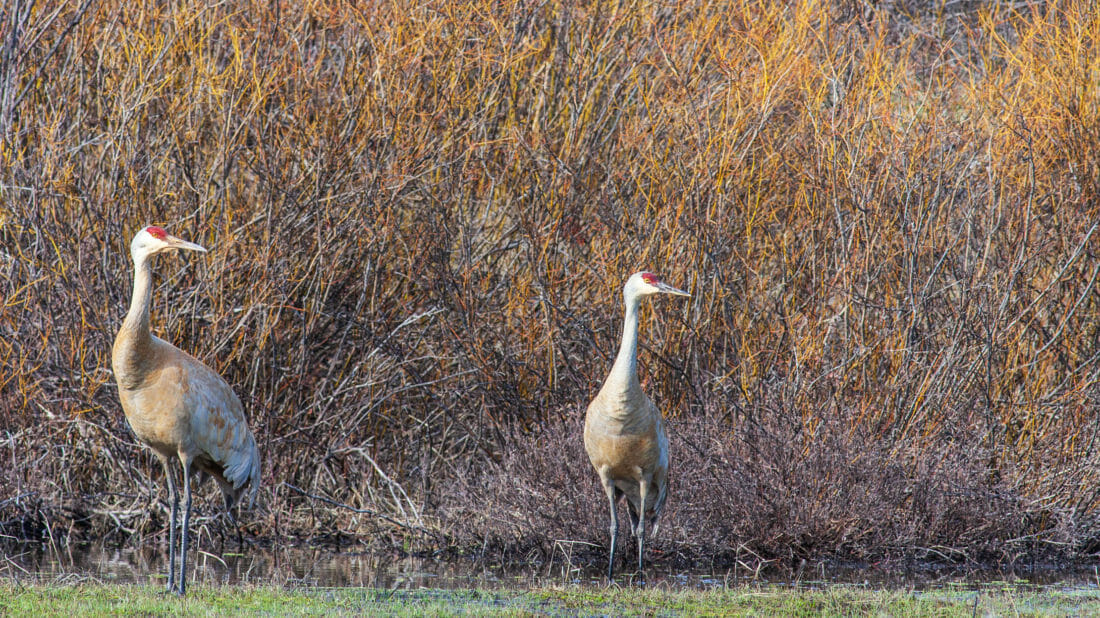
Yellowstone also hosts many species of scavengers and songbirds. The common raven often spends its time patrolling parking lots, hoping to snatch up food dropped by people, though sometimes these birds go as far as opening up backpacks to steal snacks! More naturally, the raven will follow hunters such as wolves, and clean up any leftovers those predators might leave behind. Found in open sagebrush habitat is the less conniving, and more glamorous western meadowlark. This is the state bird of Montana, and is a wonderful example of the lovely song birds that inhabit Yellowstone National Park. In spring, the meadowlark will fill the air with its beautiful, melodic song. Every type of habitat in Yellowstone houses a unique selection of birds, so always keep an eye and ear out!
This striking bird is the Western Meadowlark. They have a melodic song that will fill the air when spring finally begins to thaw out the sagebrush steppe habitat of Wyoming and Montana.
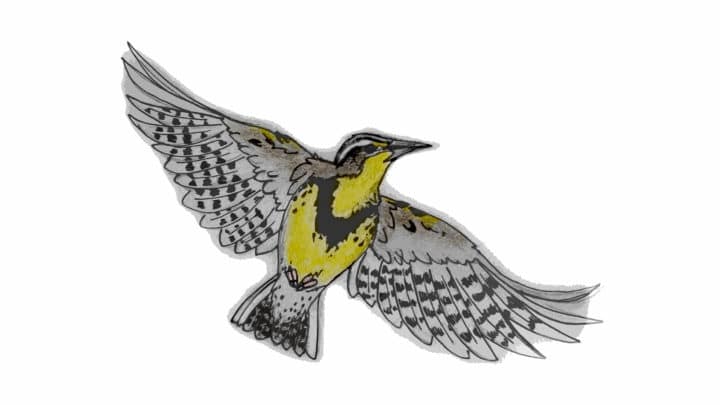
Colorful Thermophiles
Not many visitors to Yellowstone National Park realize that in admiring the colorful borders and streams flowing from the hot springs and geysers they are, in reality, observing living organisms. These striking colors found in the hot waters of the park are pigmented bacteria, also known as “cyanobacteria”, that can survive in temperatures as high as 185 degrees Fahrenheit! This is how these tiny organisms also got the name “thermophile”, which translates to “heat loving”.
These cyanobacteria evolved and live only in the geothermal features found in Yellowstone National Park. There are multiple species of these bacterium that are discerned by color, what temperature range they survive in, and what geothermal basin they are located in. Each individual bacterium is only the size of a single cell, but millions upon millions of them will bind together to form thick, colorful bacterial mats. Aside from being visually striking, these thermophiles are believed to be some of the earliest life forms that evolved on Earth, back when some of the only building blocks on the planet were water, heat and sunshine.
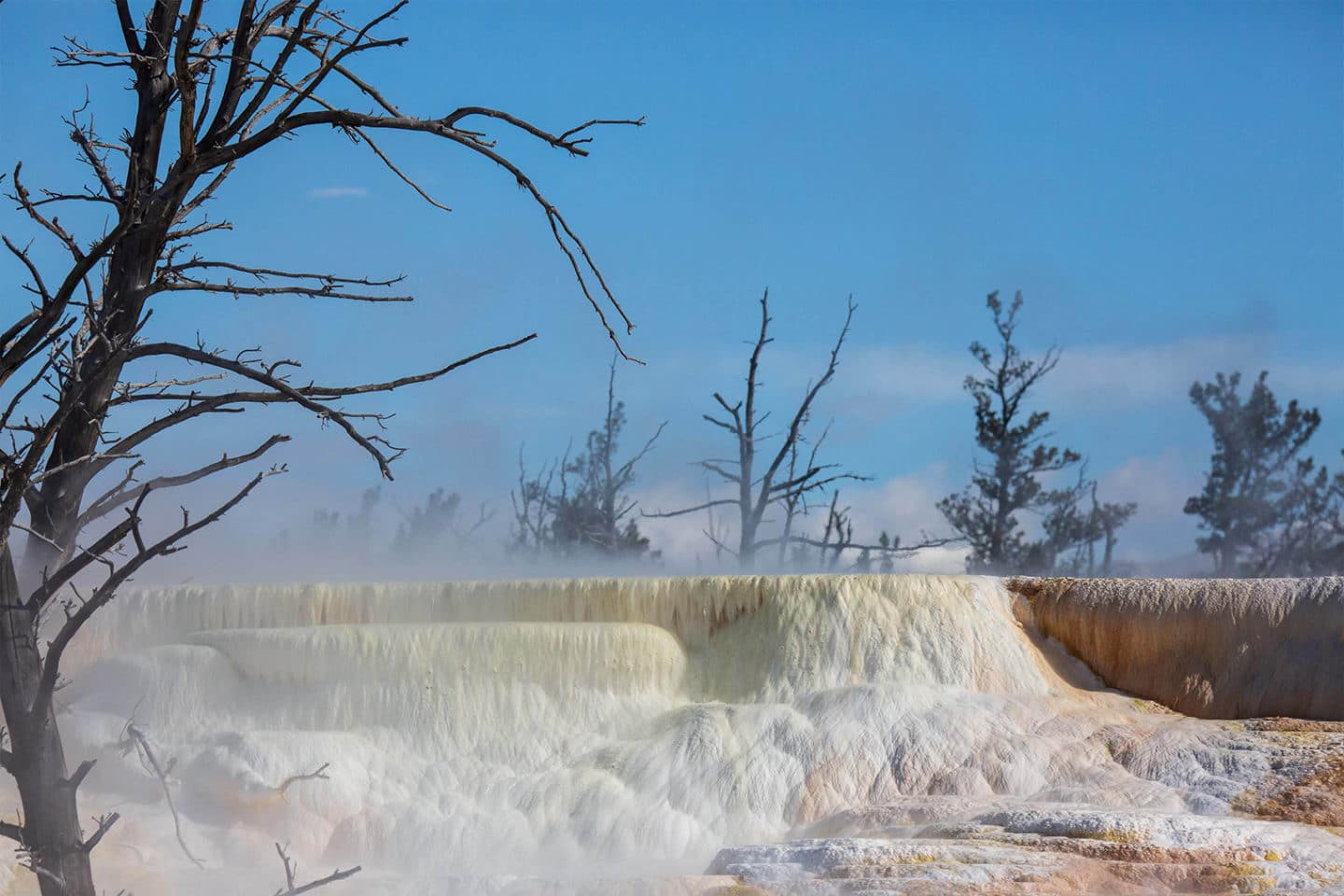
How can I find all these animals?
Depending on what wildlife you are searching for, start by going to the habitat that animal is most often found in. Quite often you might be waking up before sunrise so that you can begin looking for these animals when they are most active. Tools like binoculars and a spotting scope are essential too, because wildlife is not always right by the road, and you should never approach wildlife.
A guided Yellowstone tour may offer the best opportunities to see wildlife in the wild. Professional guides are in the field daily and they know where you’ll have the best chances at spotting one of the many species that call Yellowstone National Park home. You can opt for a driving safari, which allows you to cover more ground in a day, or opt for a walking safari for a slower-paced close-up look at nature in Yellowstone.

